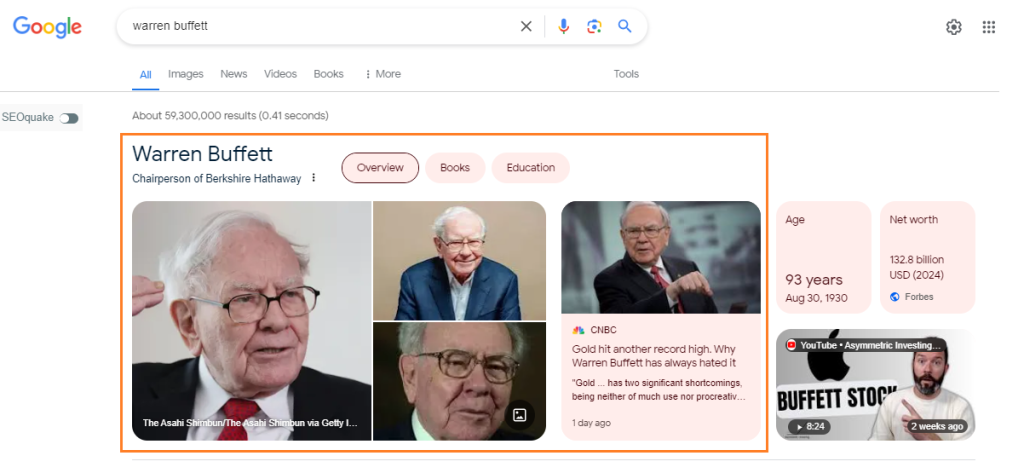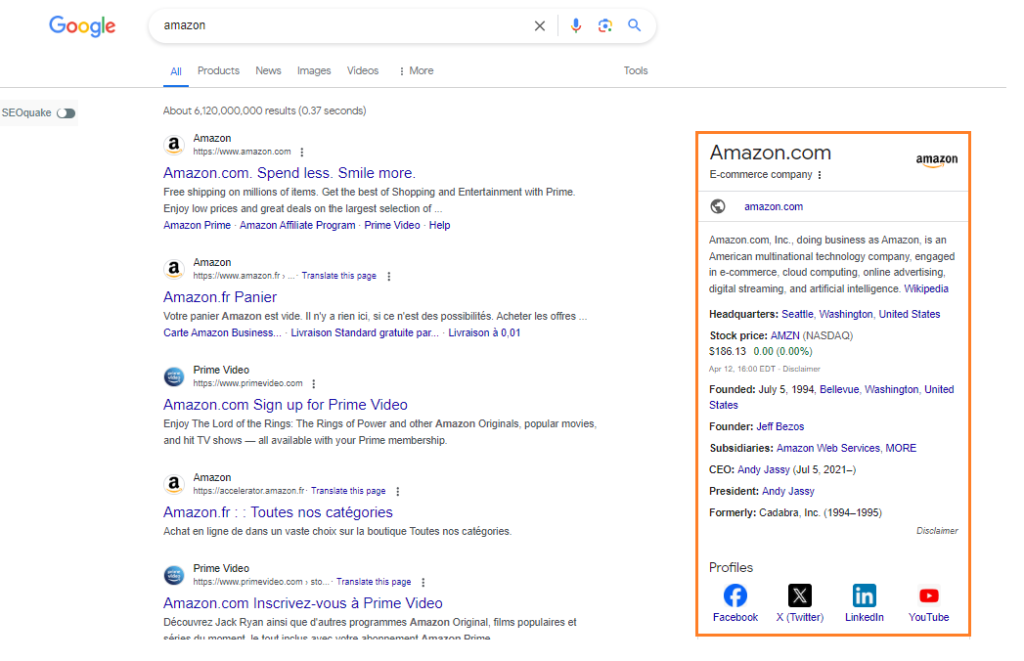Understanding SERPs: Concepts, Features & Tips
Table of Contents
According to Google, over 90% of online users begin their day with finding something on search engines. Whenever type a question or a query they get a sea of links. But how they become visible to them? It’s all because of Search Engine Result Pages, or SERPs. They are the gateways to information available online from where the right source can be picked.
This comprehensive blog is focused on explaining SERPs in detail. From knowing their concepts to how do they work in terms of SEO, it has all the information you need to get started.
Whether you’re a curious internet user or a business owner looking to improve your online presence, understanding SERPs is crucial.
What are Search Engine Result Pages (SERPs)?
When you enter a search query into a search engine (like Google), you’re presented with a list of webpages relevant to your terms. These pages, known as Search Engine Results Pages (SERPs), act as gateways to the information you seek.

SERPs go beyond simply displaying links. They often include snippets of text, images, and other details to help you quickly understand if a webpage is relevant to your needs. Search engines personalize this experience by considering factors like your location, past searches, and even social media activity.
However, the way SERPs look and function is constantly evolving. Search engine giants like Google and Bing strive to make the user experience more intuitive and responsive, ensuring you find the most helpful information as quickly as possible.
How Do SERPs Work?
Unseen by users, search engines work tirelessly behind the scenes to deliver the most relevant results. Complex algorithms analyze vast amounts of indexed webpages and multimedia content in real-time. These algorithms consider various “ranking signals” – characteristics that influence a webpage’s position on the results page.
Here’s a glimpse into some of these ranking factors:
- Popularity: Search engines take note of how many other websites link to a particular webpage. A high number of backlinks suggests the page is a trusted authority on a specific topic.
- Relevance: Including a well-rounded set of keywords related to the user’s search query plays a positive role in ranking. However, be cautious of keyword stuffing, a tactic search engines dislike. Tools like Google Trends can provide insights into how keywords and phrases are searched over time.
- Clarity and Usability: Search engines, particularly Google, favor content that’s well-organized and easy to navigate. This includes using simple language and structuring the page into clear sections for quick scanning.
- User Experience: Beyond content, factors like webpage loading speed, security, and overall user-friendliness also influence ranking.
- Website Authority: Search engines consider a website’s overall trustworthiness over time. This includes factors like security, established traffic patterns, and the quality of backlinks it receives.
While SERPs may appear similar at first glance, containing many of the same results, subtle variations often exist based on these ranking signals and your unique search history.
Top SEO Features of SERPs
Google constantly innovates by introducing and testing new features on SERPs. Let’s explore some of the most common ones and how they can potentially drive traffic to your website.
1. Featured snippets
These condensed content snippets from top-ranked webpages often appear at the top of SERPs. Formats include paragraphs, lists, and tables. Some feature videos (suggested clips).

Google usually pulls snippets from the top five results. Optimizing your content for potential inclusion in featured snippets can be a winning strategy if you’re already ranking highly for a query.
2. Top stories
This carousel showcases recently published articles, live blogs, and videos. Each entry includes a thumbnail, title, publisher name, and timestamp, typically displayed near the top of the SERP. This feature prioritizes fresh content related to news, articles, or live events. Rankings here are temporary as the focus is on new information.

This feature prioritizes fresh content related to news, articles, or live events. Rankings here are temporary as the focus is on new information.
3. People Also Ask (PAA)
PAA boxes display related questions users ask Google. Each question expands to reveal an answer sourced from a webpage, similar to featured snippets. Clicking to reveal an answer loads more related questions.

Like featured snippets, PAA answers come from third-party websites. Crafting content that addresses these potential questions can increase your chance of appearing in a PAA box.
4. Knowledge card
These concise answer boxes appearing at the top of SERPs offer definitive answers to queries.

They come in various formats and rely on three main data sources: Google’s Knowledge Graph, data partners, and highly trusted sources like Wikipedia or government websites.
5. Knowledge Panel
Offering in-depth information about the main search query subject, Knowledge Panels usually appear near the top of mobile SERPs or on the desktop right-hand side.

They leverage data primarily from Google’s Knowledge Graph and trusted sources like Wikipedia, with occasional links to social profiles and partners. So, if you’re a business entity or a well-known personality, having a well-populated Knowledge Panel can significantly enhance your online presence.
6. Related Searches
These are not just random suggestions – Related Searches are keywords directly connected to your original search query. Clicking on one of these keywords opens a new SERP using those keywords, allowing users to explore various aspects of the topic.

Typically displayed at the bottom of SERPs, related searches are often a simple list of keywords.Including relevant related searches within your content can help users find your website while exploring various angles of the topic.
7. Local Pack
Appearing for searches related to local needs, the Local Pack showcases information about nearby businesses and organizations alongside a Google Maps embed.

If you have a local business with a strong online presence, optimizing your website for local SEO (Search Engine Optimization) can ensure your listing appears in the Local Pack for relevant searches in your area.
8. Image Pack
A picture is worth a thousand words, and the Image Pack capitalizes on that. This feature displays a collection of image thumbnails relevant to your search query. Clicking on an image thumbnail takes you to Google Images for further exploration.

The link will always lead to Google Images, not your website directly. However, users who find your image through the Image Pack can still find the source link once they’re on Google Images, potentially driving traffic back to your site.
9. Shopping Results
While organic search results focus on informative content, Shopping Results, also known as Product Listing Ads (PLAs), cater to users with purchase intent. These results showcase relevant products from paid advertisers, allowing users to compare prices, retailers, and even see reviews and special offers at a glance.

Shopping results are most likely to appear for queries that indicate a transactional or commercial investigative search intent. So, if you’re an e-commerce business and your products are relevant to the search query, you can leverage PLAs to grab user attention right on the SERP and potentially drive sales.
10. Videos
Videos have become a powerful communication tool, and SERPs acknowledge that with Video Results. These results are essentially organic search results enhanced with a video thumbnail.

Google typically displays additional information alongside the thumbnail, such as the upload date, video duration, and the name of the uploader who created the content. This allows users to make informed decisions about whether to click and watch the video.
11. Sitelinks
Sitelinks appear as additional links displayed below that website’s main search result. These links point to other relevant pages on the same website, offering users a deeper dive into the topic or showcasing other valuable content the website offers.

Organic Search Results vs Paid Search Results
SERPs present you with two main categories of results: organic and paid. Both play a crucial role in capturing user attention, particularly at the outset of their buying journey. Understanding the difference is key to crafting an effective digital marketing strategy.
1. Organic Search Results
Organic search results are the holy grail for many websites. These are the listings a search engine’s algorithm deems most relevant and valuable based on complex ranking signals. There’s no shortcut to the top – you can’t simply pay your way to organic ranking dominance.
The key to organic success lies in Search Engine Optimization (SEO). By optimizing your website and content for relevant keywords and search intent, you can make your page a trustworthy and authoritative source of information.
They don’t require a constant financial investment unlike paid ads. Plus, well-optimized content can offer a strong return on investment (ROI) by attracting qualified users consistently over time.
2. Paid Search Results
Also known as sponsored links or Google Ads, paid search results allow businesses and individuals to gain prominent placement on SERPs. Essentially, you pay a search engine to display your webpage on the first page for specific keywords.
Paid results typically appear above organic listings and are clearly labeled as “Ads” to avoid user confusion.These targeted ads work by bidding on specific keywords and phrases relevant to your product or service. Search engines like Google typically display a limited number of paid ads (usually 3-4) at the top of a SERP.
Digital marketers often utilize the pay-per-click (PPC) model for paid ads. This means you only pay the search engine when someone clicks on your ad, allowing for a more cost-effective approach compared to traditional advertising methods.
If long-term brand building and organic growth are your priorities, then investing in SEO and creating high-quality content is the way to go.On the other hand, if you need to generate immediate brand awareness or target a very specific audience with laser precision, then paid search offers a compelling solution.
How eSearch Logix helps to rank a website on SERPs?
Now that you’re armed with SERP knowledge, you might be wondering how to get your own website ranking high on those coveted top pages. That’s where eSearch Logix comes in.
We’re a team of SEO experts dedicated to propelling your website to the forefront of search results. Here’s how we achieve that:
1. SEO Audits & Strategy
We start by conducting a thorough SEO audit of your website. This helps us identify areas for improvement, understand your target audience, and develop a customized SEO strategy to achieve your goals.
2. Keyword Excellence
Finding the right keywords is crucial for attracting the right visitors. We employ in-depth keyword research to identify relevant keywords with high search volume and low competition.
3. Content Optimization
Compelling and informative content is the king of SEO. We help you create high-quality, keyword-rich content that not only engages your audience but also signals relevance to search engines.
4. Technical SEO Expertise
From website architecture and mobile-friendliness to page speed and code optimization, our technical SEO specialists ensure your website is search engine friendly.
5. Domain & Link Building
Backlinks from high-authority websites are a major ranking factor. We employ white-hat link-building strategies to acquire valuable backlinks that boost your website’s credibility and trust in the eyes of search engines.
By focusing on these key areas, eSearch Logix helps your website climb the SERP ladder organically and sustainably. We don’t just get you there; we help you stay there with ongoing monitoring and adjustments to keep pace with the ever-evolving SEO landscape.







